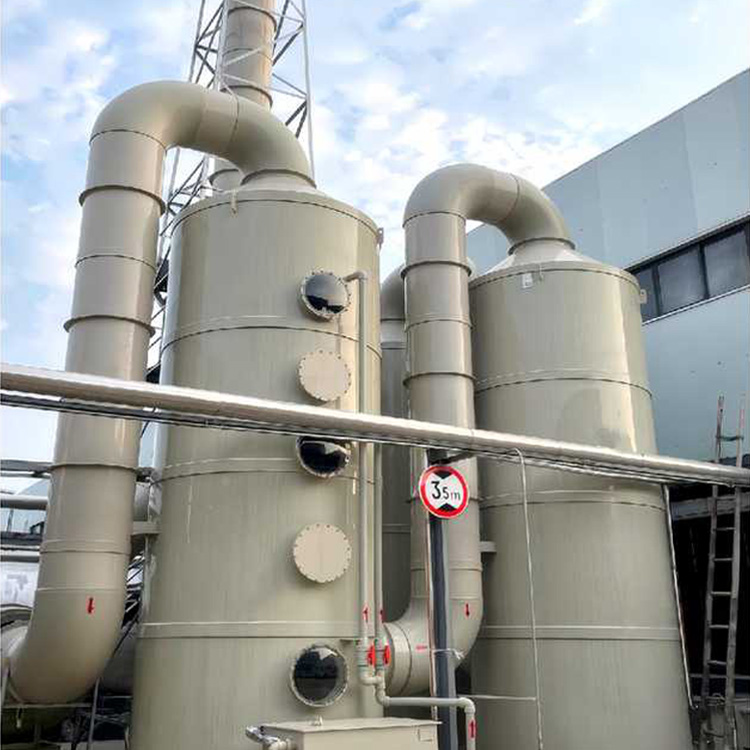What Is Waste Gas Treatment and Why Does Your Facility Need It?
2025-08-07
Industrial activities often release harmful gases into the environment. From manufacturing plants to chemical processing units, waste gas treatment is no longer optional—it's a legal and environmental necessity. But what exactly is waste gas treatment, how do the systems work, and why should your company invest in the right solution?
Let's explore the answers and dive into the detailed specifications of our high-efficiency waste gas treatment systems designed for modern industry needs.
What Is Waste Gas Treatment?
Waste gas treatment refers to a series of processes used to remove or neutralize harmful substances from industrial gas emissions before they are released into the atmosphere. These gases may include volatile organic compounds (VOCs), sulfur oxides (SOx), nitrogen oxides (NOx), acid gases, particulate matter, and other toxic components.
Treatment systems are tailored to the specific type of industry and contaminants involved, ensuring compliance with environmental regulations and workplace safety standards.
Why Choose Our Waste Gas Treatment System?
Our systems are engineered to deliver superior purification performance, energy efficiency, and long-term reliability. Designed with modular flexibility, they can be adapted to various industrial applications including:
-
Chemical plants
-
Electronic manufacturing
-
Pharmaceutical production
-
Food processing factories
-
Metal plating and finishing
-
Printing operations
Core Product Parameters
Below are the detailed specifications of our Waste Gas Treatment System (Model: CG-WGT5000):
| Parameter | Specification |
|---|---|
| Model | CG-WGT5000 |
| Air Volume Capacity | 1000–50000 m³/h |
| Treatment Efficiency | ≥ 95% (VOC removal), ≥ 98% (acid gas removal) |
| Filter Material | Activated carbon, PTFE-coated fiber, UV catalyst |
| Power Supply | 380V / 50Hz (customizable) |
| Operating Temperature | 10°C–60°C |
| Control System | PLC intelligent control with touchscreen interface |
| Noise Level | ≤ 75 dB |
| Footprint | 3.5m x 2.0m x 2.2m (modular expandable) |
| Material | SS304 / FRP (corrosion-resistant) |
| Optional Features | UV photolysis module, Wet scrubber module, Remote monitoring |
Common Waste Gas Pollutants Our System Handles
| Pollutant Type | Examples | Treatment Technology Applied |
|---|---|---|
| VOCs | Benzene, Toluene, Xylene | Activated Carbon Adsorption / UV |
| Acid Gases | HCl, H2SO4, HF | Wet Scrubber / Neutralization |
| Odors | Ammonia, Hydrogen Sulfide | UV Photolysis + Catalysis |
| Particulate Matter | Dust, Fine Metal Particles | High-efficiency Filtration |
| Nitrogen Oxides | NOx compounds | Catalytic Reduction |
Frequently Asked Questions (FAQ) — Waste Gas Treatment
Q1: What is the difference between wet and dry waste gas treatment methods?
A1: Wet treatment involves scrubbing the gas stream with a liquid solution to absorb or neutralize pollutants, ideal for acidic or water-soluble compounds. Dry methods use materials like activated carbon to adsorb gases without any liquid handling. Wet systems are often used in chemical processing, while dry systems are suitable for VOCs and odors.
Q2: How often does the waste gas treatment system require maintenance?
A2: Maintenance frequency depends on pollutant concentration and operational hours. Typically, filter media should be inspected every 3–6 months, and replaced if saturation is detected. The control system logs will alert operators for scheduled service. Preventive checks can ensure optimal performance and reduce downtime.
Q3: How do I calculate the size of the waste gas treatment system needed for my facility?
A3: System sizing depends on air volume (m³/h), pollutant types, and concentration levels. Our engineering team provides a comprehensive on-site evaluation to determine the most effective system size. Factors such as ductwork layout, peak flow rates, and emission standards are all considered during system design.
Case Study Snapshot
Client: Electronics Manufacturer in Shenzhen
Problem: VOC emissions from solvent use exceeding local standards
Solution: Installed CG-WGT5000 with dual-stage carbon filtration and UV photolysis
Result: VOC levels reduced by 97%, compliance achieved within 3 weeks of operation, remote monitoring enabled
Why Waste Gas Treatment Matters for Your Business
Failing to properly treat industrial emissions can result in:
-
Hefty fines and regulatory shutdowns
-
Damaged reputation among clients and the public
-
Unsafe working conditions for employees
-
Long-term environmental impact
By investing in a waste gas treatment system, companies not only comply with regulations but also demonstrate corporate responsibility and commitment to sustainable development.
Get a Customized Quote
We offer free technical consultations to help you determine the best solution. Contact Yangzhou Lvquan Environm Ental Engineering Technology Co., Ltd. with the following details:
-
Industry type
-
Airflow volume
-
Known contaminants
-
Facility layout or constraints
Our team will respond within 24 hours with a tailored solution and quotation. Waste gas treatment is an essential component of responsible industrial operations. From safeguarding the environment to maintaining regulatory compliance, a well-designed treatment system pays dividends in performance, reliability, and reputation. With over 20 years of experience, our team is ready to design the right solution for your facility's needs.



